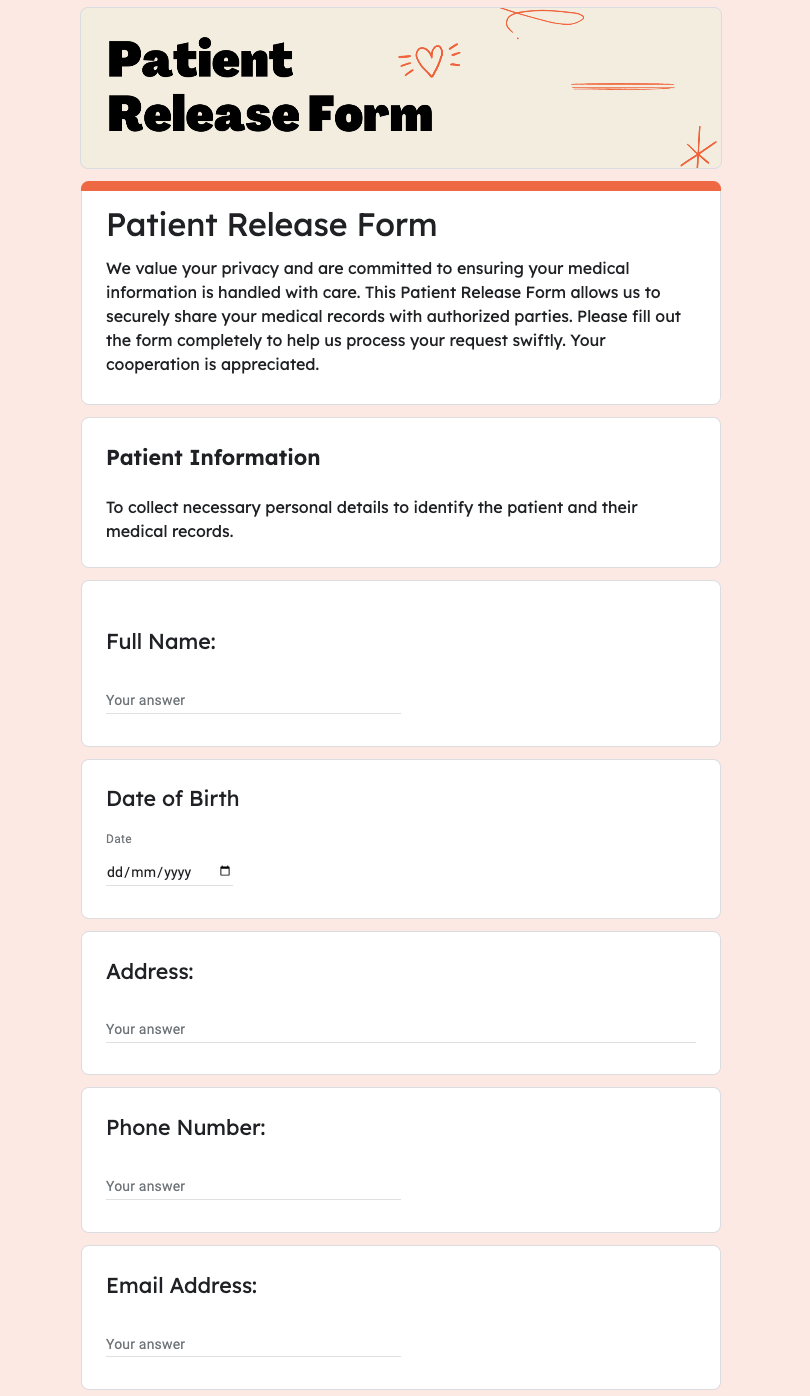Patient Release Form
FREE
A Patient Release Form is an essential tool that simplifies the discharge process, ensuring all necessary details are clearly documented and understood by both the patient and the healthcare provider. By using this form, you can prevent misunderstandings, provide clear aftercare instructions, and protect against potential legal issues. It promotes effective communication, offering peace of mind and helping patients transition smoothly from hospital care to home. Accessible and easy to use, this form is a smart choice for anyone looking to manage patient discharges efficiently and securely.



